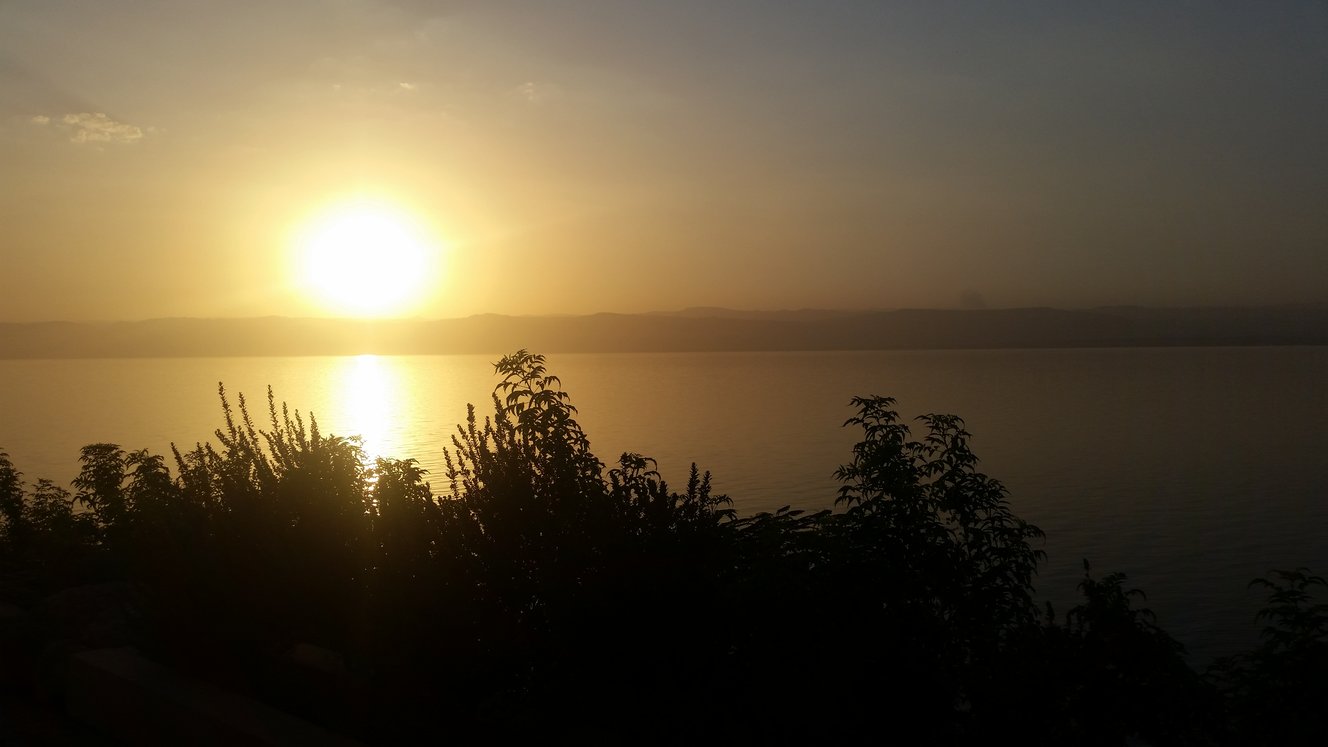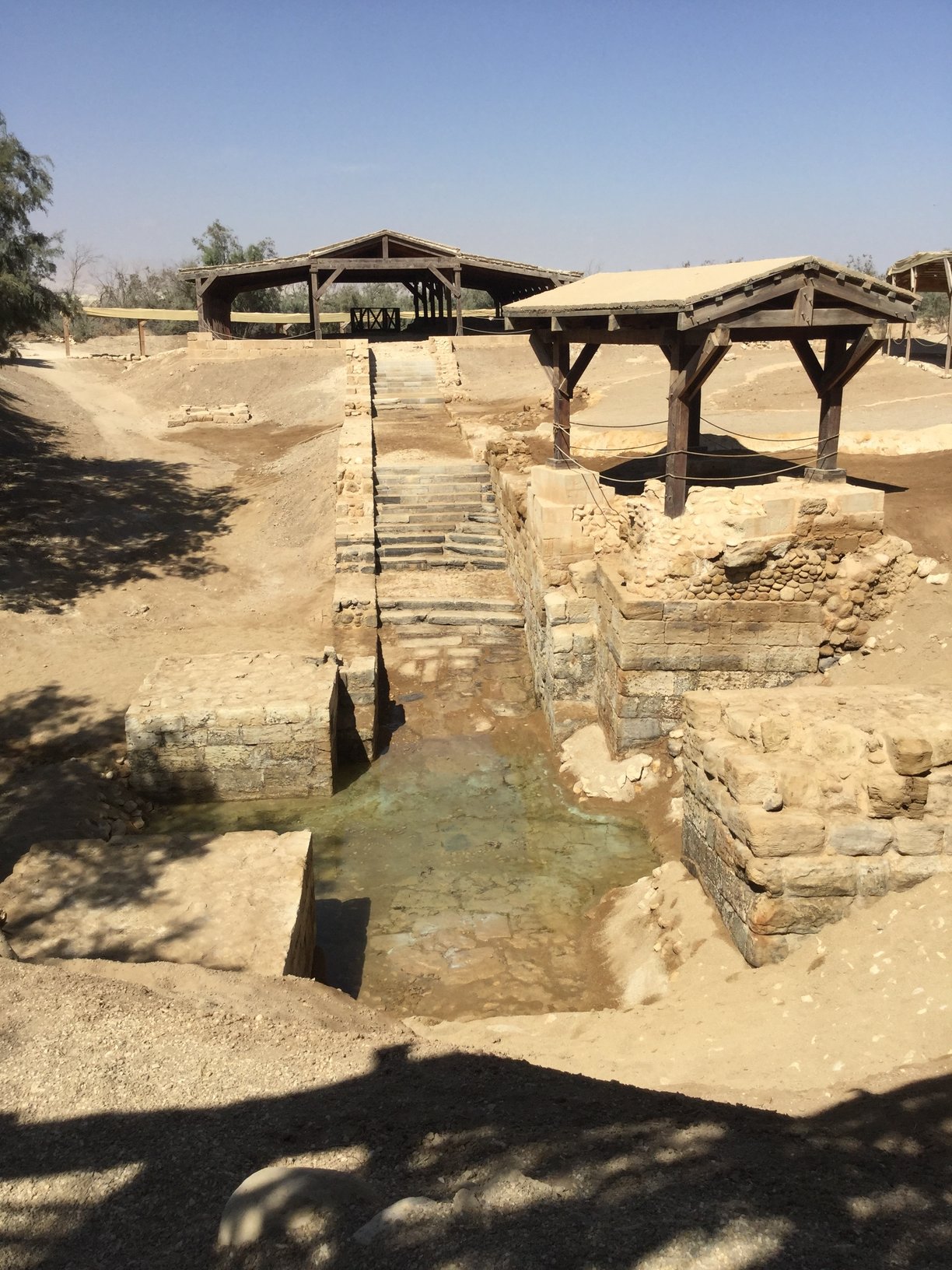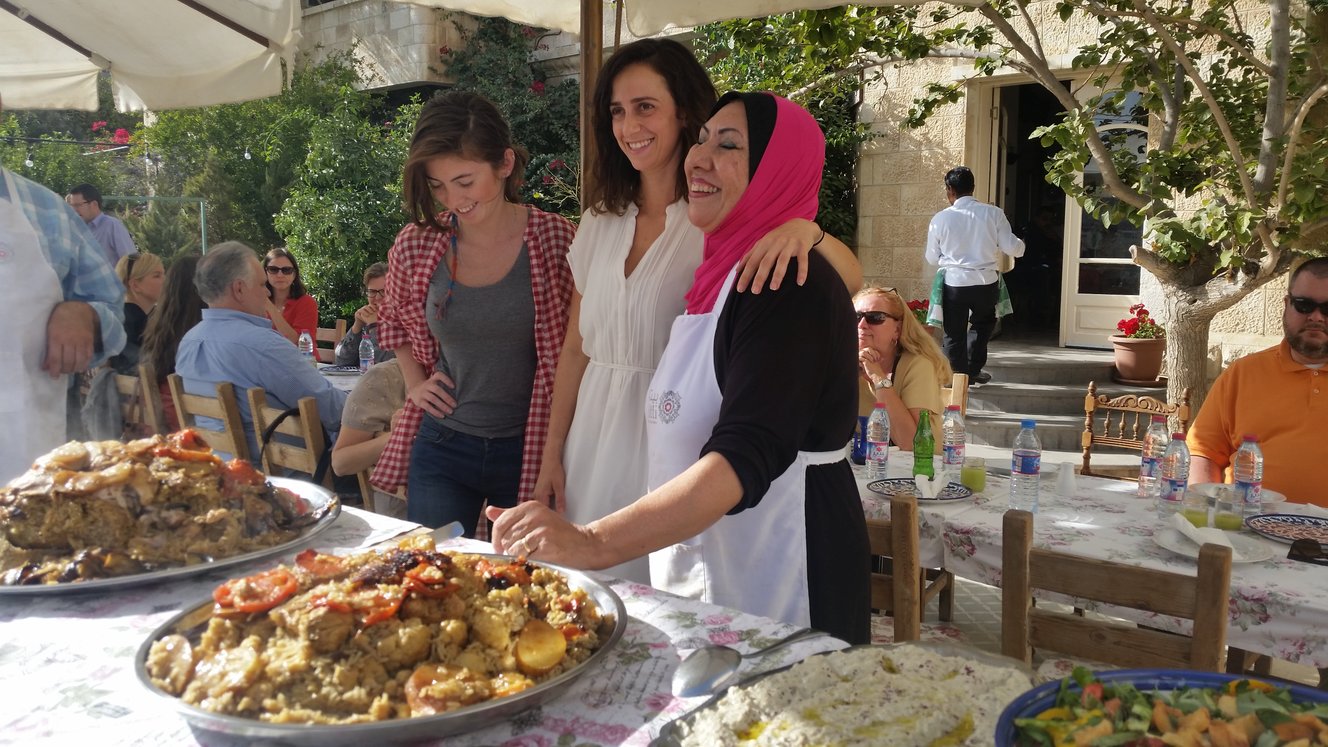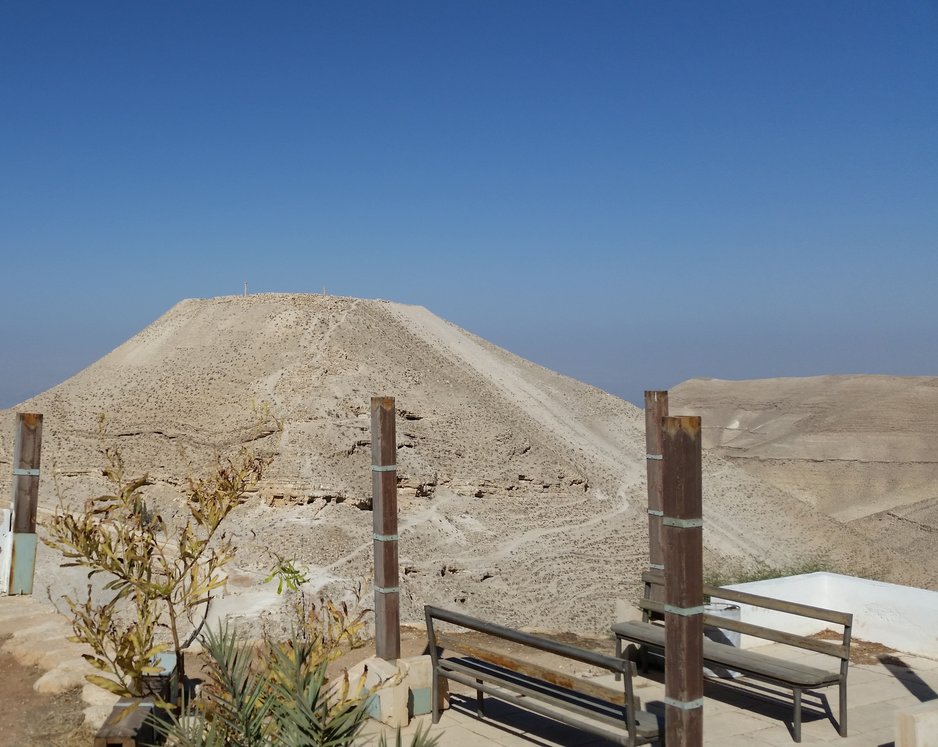Encountering the Lord’s Mercy in the Footsteps of John the Baptist
A Year of Mercy pilgrimage to the Holy Land of Jordan.

“Truly, I say to you, among those born of women there has risen no one greater than John the Baptist; yet he who is least in the kingdom of heaven is greater than he.” — Matthew 11:11
AMMAN, Jordan — The Kingdom of Jordan, the East Bank of the Holy Land, has the meaning of the Jubilee Year of Mercy — “Merciful Like the Father” — written all over the holy places and the people. As a Christian pilgrim on a tour for religious journalists sponsored by the Jordanian Tourism Board, I had an opportunity to experience in a deeply personal way the historical truth of God’s love and work of salvation for mankind by walking in the footsteps of St. John the Baptist, the greatest of the prophets.
As a pilgrim who had already visited the holy sites in Israel and Palestine, the West Bank of the Holy Land, I realized that a Holy Land encounter with the Lord’s merciful love for us really requires starting the pilgrimage in Jordan, the East Bank of the Holy Land. Going through the patriarchs and prophets leading up to St. John the Baptist, who “makes straight the paths of the Lord,” I discovered a missing context for the story of our redemption that shows the Lord’s mercy and love in a way the Bible’s texts cannot do by themselves.
Jordan is arguably the safest and most secure country in the Middle East. The kingdom is at peace with all of its neighbors and has a unique Arab society. Wherever I went, I encountered a welcoming culture of hospitality, a warm fraternity of Christian-Muslim coexistence, and an abiding love of their ancient sites and heritage.
Jordan’s tribal society is thousands of years old, but provides the key for the drama that takes place on this land. At the Jabbok River, I stood near the ford where Jacob wrestled with a mysterious “man” — perhaps a theophany of God — and refused to let him go, despite a bad hip injury, until he received a blessing.
As I learned on this pilgrimage, Arab tribal law requires hospitality to be given and received: If someone renders you a service, you must accept that gift of hospitality and reciprocate with a token of gratitude. So Jacob received his blessing and gets his new name, Israel, or “He who wrestles with God.”
The site has added spiritual importance for Christians, because Jacob, our father in faith, asks God for his name. God will give his answer 1,800 years later with “Jesus.”
Preparation for the Promised Land
The next stop on my pilgrimage brought me to the historically Christian town of Madaba, which is near one of Jordan’s holiest sites: Mount Nebo, where the Lord showed Moses the Promised Land of “milk and honey.” The city itself earned fame for its Byzantine and Umayyad-era mosaics — a proud legacy the Madaba Christians carry on today. The Church of St. George in Madaba has the largest intact Christian floor mosaic of the Middle East that shows the many holy sites, through modern-day Jordan, Israel, Palestine and Egypt, which ancient pilgrims would visit.
The view from Mount Nebo is peaceful and beautiful — but not what you’d expect if you left the green banks of the Nile Delta, expecting an easy life in a tropical paradise. On your left, you see the placid Dead Sea; in front of you stretches more desert and patches of green around the Jordan Valley, and then on your right are the Lake Tiberias (or Sea of Galilee) and more desert mountains.

“I think Moses got up here and had a heart attack,” quipped Raed Haddad, our Christian tour guide. Haddad said God was actually showing Moses and the tribes of Israel an important lesson in how the rewards of salvation come with hard work. The land actually produces honey from the cultivation and harvest of date trees, and milk comes from shepherding flocks of sheep and goats. Haddad pointed out that the name “Promised Land” is also not meant as a title to a deed, but as a place of meeting or “appointment.” God told the Israelites to live here because he would be meeting them through Jesus.
Of course, Moses does not enter the Promised Land. And while striking the rock twice may seem like a steep punishment from God, Haddad explained what Moses did was serious. Our group stayed with the Bedouins in the Wadi Rum for a night, and Haddad explained that the Bedouins know, like Moses knew, that you can get water out of sandstone rocks because they become hollow and fill up with water. So when God wanted Moses to “speak to the rock,” the Lord wanted to show his power and merciful love to his people. Instead, Moses berated the people and decided to do it the way he had been taught: He struck the rock twice until it broke the shell and the water inside came forth. Moses displayed his power and anger — not God’s power and mercy — and broke his covenant with the Lord.
Ancient pilgrims to Holy Jordan would travel down from Mount Nebo to Bethany beyond the Jordan, which has so much history wrapped up in one small place. Joshua crossed here from the East Bank to the West Bank on the way to Jericho. Here, Elijah the prophet lived in a cave on a hill among the reeds and was taken up into heaven in a fiery chariot. And here, we encounter St. John the Baptist, who lived in Elijah’s cave and had a prophet’s authority, because he was “Elijah who-is-to-come,” as Jesus said. The early Christians revered the site, and Byzantine monks built a monastery and a church around the cave.
Eleven churches are under construction on this holy ground overlooking Jesus’s baptismal site, with the encouragement of King Abdullah II, who is a direct descendant of the Prophet Muhammad and has reinforced Jordan’s palpable culture of Christian-Muslim fraternity.
In order to get to the baptismal site, I had to travel down from Elijah’s Hill through a winding path of trees and reeds. At times, I had to bend low — a physical reminder that we can only meet the Lord if we come to him bending low in humility — but then I came to the site.
“Welcome to the lowest place on earth, but closest to heaven,” Rustom Mkhjian, associate director of the baptism site, greeted our group.
This is the world’s oldest baptistery, where Christians kept building churches despite earthquakes and floods that would level them. I had the grace of going down into the baptistery itself and making the Sign of the Cross nine times — a kind of triple Kyrie — in that water where St. John the Baptist baptized Jesus and where the Lord says eternally: “This is my beloved Son, in whom I am well-pleased. Listen to him!”

Jesus Exorcises the Land
Jesus walked on the eastern bank of the Jordan, and the Gospels record his miracle of exorcising the demons from the man (or men) living among the tombs. At Gadara, near modern Umm Qais, I stood on the city’s ancient acropolis, where the astonished townspeople must have looked agape as they watched hundreds of pigs charging over the cliff into the Sea of Galilee.
Sadly, the people come out to meet Jesus only to tell him to go away. I looked at the ruined main street of Gadara, the empty amphitheaters and the abandoned shops beside the ruined temple and reflected that they exchanged the Eternal Word for treasure that does not last. But we do know that Jesus did gain a disciple of the once-possessed man and that the faith would flourish and flower in Jordan as the apostles spread the Gospel.
A pilgrim to Jordan ought to visit the rose-red city of Petra, the capital city of the Nabateans, who would later embrace Christianity. The ancient city is most remembered for its remarkable tombs, especially the iconic treasury building, the tomb of Aretas IV. Aretas is an important figure because he put an end to Herod Antipas’s rule to avenge his daughter, whom Antipas was going to divorce in order to marry Herodias.
Catholic Communion
Of course, while in Jordan, one must visit the Christians. I had the beautiful opportunity of worshipping with my fellow Catholic pilgrims both at the Latin Parish of Fuheis and the old Melkite Greek Catholic Cathedral of St. Peter and Paul in Amman. I enjoyed wonderful hospitality from two Christian sisters at Beit Sitti (“Grandma’s House” in Arabic) and saw the works of mercy being done with the Pontifical Mission Library in Amman, the Dominican sisters’ clinic in Zarqa and the new Pope Francis Center in Amman, which will facilitate interreligious dialogue.

The final destination of this pilgrimage was Machereus, the palace-fortress of Herod Antipas, where St. John the Baptist was martyred. Machereus (known in Arabic as Mukawer) sits on a tall mountain overlooking the Dead Sea. The breeze has a mournful feel as one ascends the mountain, passing by the caves where St. John the Baptist may have been imprisoned. Up this winding path around the mountain, the soldiers carried the head of St. John the Baptist, after Salome danced and Antipas granted Herodias’s murderous request. On this holy ground, the last prophet of the Old Testament spilled the last drop of his blood.
At the top, I opened up my prayer book, The Customary of Our Lady of Walsingham, and read the canticle that Zacharias, John’s father, spoke upon the birth of his son.

As I bid farewell to “Holy Jordan” and the new friends I made, I boarded my Royal Jordanian flight. I looked down at my shoes — they had been new before the trip — and saw how worn and covered with dust they looked. I came looking for an experience of God’s mercy and found myself enriched by walking a path that led me to St. John the Baptist, who prepares the way of the Lord — and the way of the Lord is mercy. And I recalled the end of the canticle the prophet’s father had uttered, outlining his vocation and our vocation: “to give light to them that sit in darkness, and in the shadow of death, and to guide our feet into the way of peace.”
Peter Jesserer Smith is a Register staff reporter.
- Keywords:
- holy land
- jesus christ
- jordan
- peter jesserer smith
- pilgrimages
- st. john the baptist
- year of mercy

















